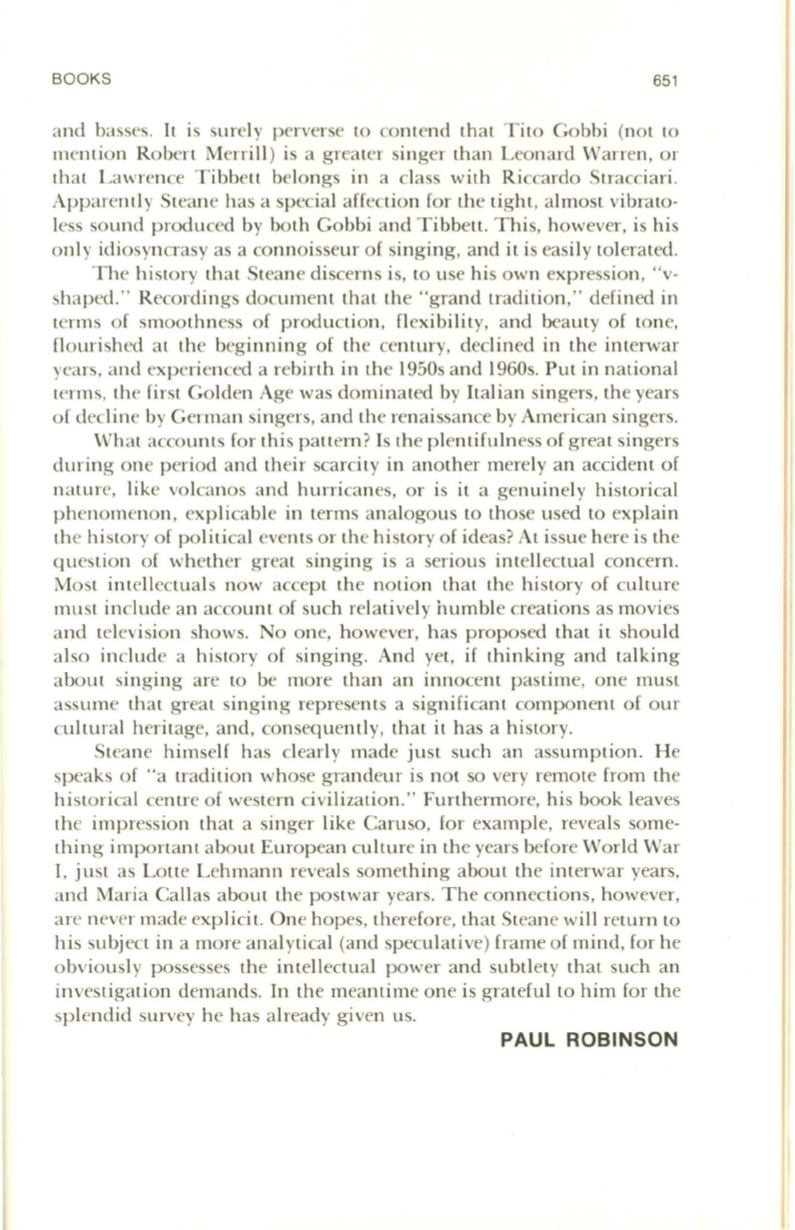
BOOKS
651
and basses.
It
is surely perverse to contend that Tito Gobbi (not to
mention Robert Merrill) is a greater singer than Leonard Warren, or
that Lawrence Tibbett belongs in a class with Riccardo Stracciari.
Apparently Steane has a special affection for the tight, almost vibrato–
less sound produced by both Gobbi and Tibbett. This, however, is his
only idiosyncrasy as a connoisseur of singing, and it is easily tolerated.
The history that Steane discerns is, to use his own expression, "v–
shaped. " Recordings document that the "grand tradition," defined in
terms of smoothness of production, flexibility, and beauty of tone,
flourished at the beginning of the century, declined in the interwar
years, and experienced a rebirth in the 1950s and 1960s. Put in national
terms, the first Golden Age was dominated by Italian singers, the years
of decline by German singers, and the renaissance by American singers.
What accounts for this pattern? Is the plentifulness of great singers
during one period and their scarcity in another merely an accident of
nature, like volcanos and hurricanes, or is it a genuinely historical
phenomenon, explicable in terms analogous to those used to exp lain
the history of political events or the history of ideas? At issue here is the
question of whether great singing is a serious intellectual concern.
Most intellectuals now accept the notion that the history of cu lture
must include an account of such relatively humble creations as movies
and television shows. No one, however, has proposed that it should
also include a history of singing. And yet, if thinking and talking
about singing are to be more than an innocent pastime, one must
assume that great singing represents a significant component of our
cultural heritage, and, consequently, that it has a history.
Steane himself has clearly made just such an assumption. He
speaks of "a tradition whose grandeur is not so very remote from the
historical centre of western civilization." Furthermore, his book leaves
the impression that a singer like Caruso, for example, reveals some–
thing important about European culture in the years before World War
I, just as Lotte Lehmann reveals something about the interwar years,
and Maria Callas about the postwar years. The connections, however,
are never made explicit. One hopes, therefore, that Steane will return to
his subject in a more analytical (and speculative) frame of mind, for he
obviously possesses the intellectual power and subtlety that such an
investigation demands.
In
the meantime one is grateful to him for the
splendid survey he has already given us.
PAUL ROBINSON


